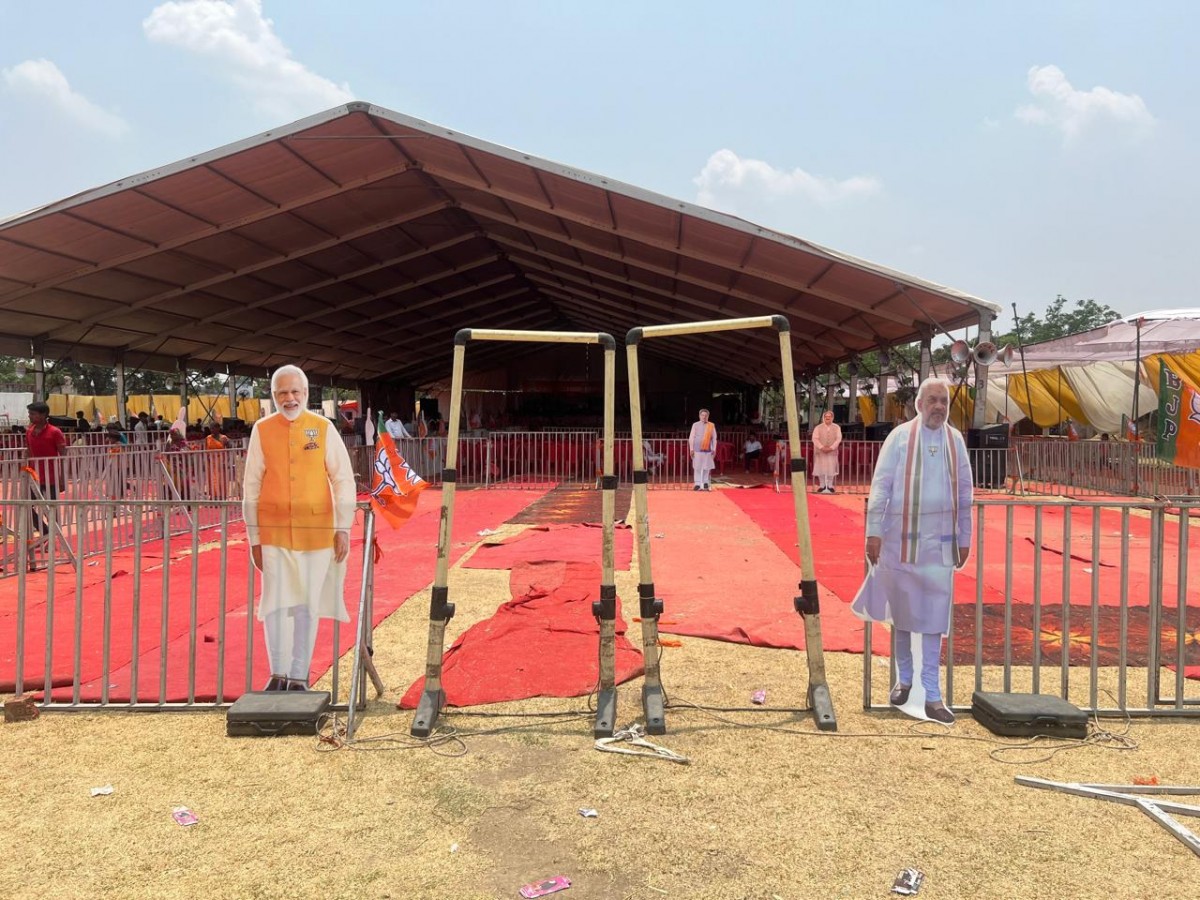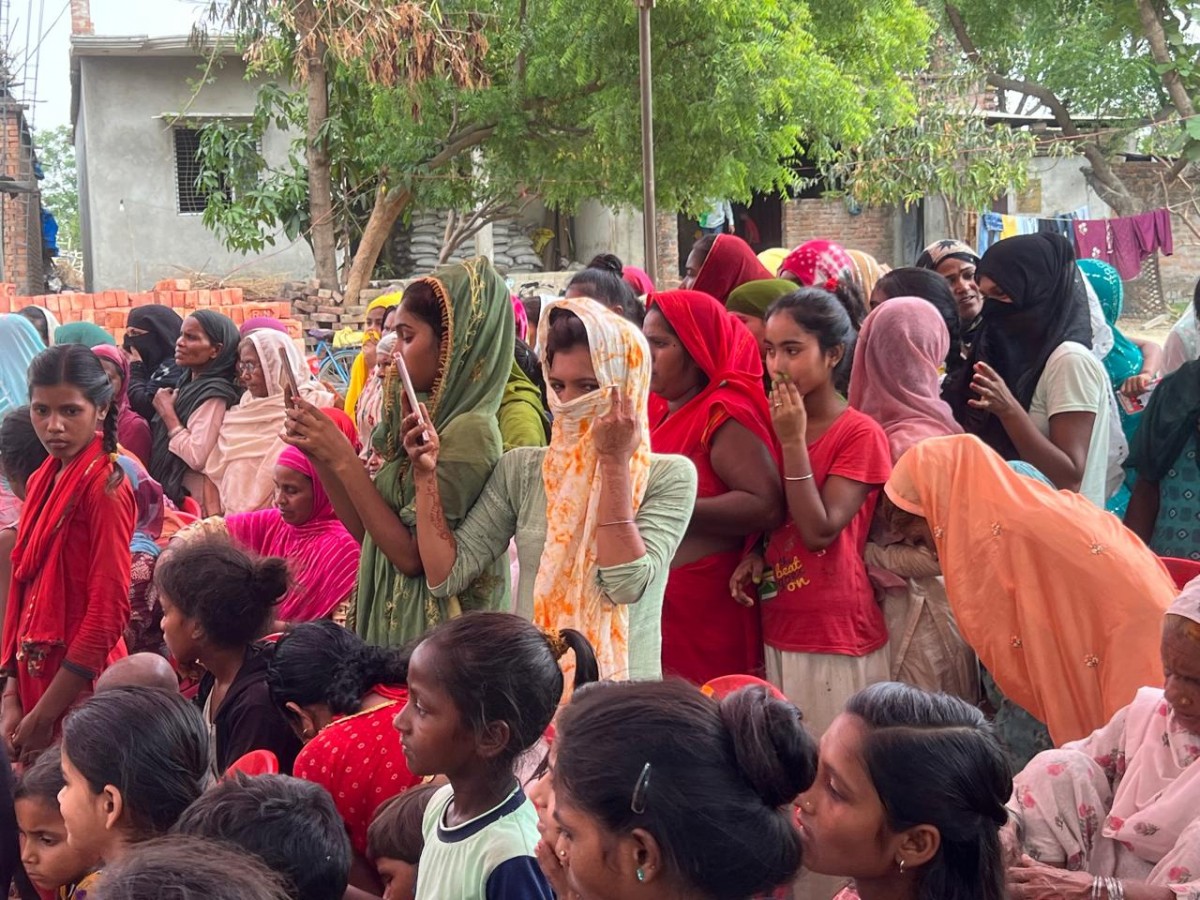Gorakhpur Emerges as an Important Barometer to Gauge ‘Change’ in UP’s Mood from 2022
Gorakhpur (Uttar Pradesh): Varanasi is by far the ‘star’ seat in the seventh and last phase of elections for the 18th Lok Sabha; it has elected an Indian prime minister for two terms running, and he is seeking re-election for the third time. But Gorakhpur is no less important for the Bharatiya Janata Party (BJP) matrix, the jostle of power between Adityanath and the central leadership, and consequently for the national picture.
It is witnessing an interesting contest between two Bhojpuri actors, sitting BJP MP Ravi Kishan versus INDIA’s Kajal Nishad, who is debuting as a Lok Sabha candidate. It is also an example of how facing up to a Ram temple pitch, the Constitution of India has emerged as a counter-call, forcing the BJP, used to setting the narrative in the past decade, to now respond to the sentiment that it intends to “change the Constitution” to “end reservations”.
Chief minister Adityanath is a five-term MP from here who won for the first time in 1998.
After assuming the post of chief minister, especially since his re-election, Gorakhpur is bustling, more than ever. It is “CM City”, says a young man who lives in the neighbourhood, watching how the boundary walls of the Gorakhnath temple complex have expanded and many new structures have come up. The roads are wider, even if at the cost of those living or earning their livelihood on their edges.
Beyond the state capital, Lucknow, Gorakhpur is now an alternate universe from where power is exerted, fusing Adityanath’s ‘Mathaadheesh’ (chief priest) status along with head of the government in India’s largest state. If you speak to his followers, they make it clear that ‘Maharaj’ is in fact what “others have tried to cast themselves into”, referring obliquely to the Ram temple’s consecration with Modi as priest.
With conversation on the streets here anticipating his being “ousted”, “asked to step down”, “no longer stay” as the state’s chief minister, should the BJP return to power with a clear majority on June 4, the contest in his pocket-borough has become even more interesting. Immediately upon coming out on bail, Delhi’s chief minister and Aam Aadmi Party chief Arvind Kejriwal set the cat amongst the pigeons by saying that the “plan” was for Adityanath’s removal, should BJP get re-elected. There was no response from Amit Shah on this and it has not done anything to quieten speculation.
Shah was quick to refute Kejriwal’s other point, that he [Shah] would take charge as prime minister “as Modi would be 75 in September, 2024”.

Preparations before Adityanath's rally in Gorakhpur on Sunday (May 26). Photo: Seema Chishti
In Gorakhpur, sitting MP and Bhojpuri star Ravi Kishan is contesting once again. Last time, he defeated Samajwadi Party (SP)’s Rambhual Nishad by over three lakh votes, or 3,01,664 votes, to be precise. But this time, he is up against another INDIA challenger, Samajwadi Party’s Kajal Nishad, also a TV and cine Bhojpuri actor and artist, who is queering the pitch for him.
The Nishads, OBCs with traditional occupations related to the river, have seen a steady recognition and Sanjay Nishad’s NISHAD party, founded in 2016, is the most recognisable beneficiary of Nishads here coming into their own as a distinct voting category that demands respect. In a 2018 by-poll, a young Praveen Nishad, Sanjay Nishad’s son, won from Gorakhpur, creating ripples and giving the opposition alliance hope. But since then, the BJP moved to stitch back its 2014 political coalition, of getting as many non-Yadav OBCs, especially the ati-pichhdas (most-backward castes, the most deprived of the OBCs) into its tent. Much water has flowed under the bridge. Sanjay Nishad’s party is now with the BJP and Praveen himself is the BJP’s candidate from the neighbouring Sant Kabir Das Nagar.
But Kajal Nishad is doing more than adding to the galaxy of Bhojpuri stars and singers in the fray this time, in UP, Delhi and Bihar, like Manoj Tewari (NE Delhi), Dinesh Lal Yadav ‘Nirahua’ (Azamgarh) and Pawan Singh (Karakat, Bihar) apart from Kishan. A deep sense of annoyance at the sitting MP being absent, not attending to his constituents, is compounded by anger at price rise and joblessness which can be seen in the form of youngsters just sitting around during the day. These feelings are now competing with respect that ‘Maharaj’ commands on his home ground, not by virtue of being chief minister as much as being at the head of the Gorakhnath math.
Contrasting campaigns
The two distinct campaign pitches here came to the fore hearing Adityanath go deep into Gorakhpur Rural, in a Nishad-dominant area, with a clear pitch calling for votes as “shrey”, credit for the Ram temple in Ayodhya.
The Model Code of Conduct expressly forbidding linking religion with voting, and the Election Commission’s letter to party presidents reiterating this, seems to have only ended up sharpening the impunity. The chief minister asked a responsive crowd, who was responsible for the Ram temple? Upon hearing “Modi” as a response, he added, “Modi for his leadership, yes, but you (people), for the vote you give, contributed to the temple being built, as all votes to the Lotus, go to Modi and Yogi and the temple.” He repeated the line, “Jo Ram ko laaye hain (Those who have brought Ram)” would have to be brought into power.
Adityanath speaks about how he had, as chief minister, ensured that Gorakhpur was as pampered as “Hazratganj in Lucknow now”, and so Kishan deserved their vote. Adityanath’s 19-minute speech was packed with burkha, Islamic shariah and Aurangzeb’s jaziya tax, which he alleged the opposition wanted to levy with “wealth redistribution” and surveys, wherein, he said, they would take away all those presents' forefathers’ property.
जनपद गोरखपुर की जनता-जनार्दन लोक सभा चुनाव में भाजपा की विजय का नया रिकॉर्ड बनाने जा रही है।
यहां आयोजित विशाल जनसभा में... https://t.co/PlJGbucyLz
— Yogi Adityanath (मोदी का परिवार) (@myogiadityanath) May 26, 2024
A punishing schedule for Bhojpuri TV and cine actor Kajal Nishad includes visits to areas known to be old ‘cycle’ supporters. She gets extra traction with women, who shed the usual inhibition exhibited by UP’s women voters as they come to see her. An angry elderly woman at her village meeting in Naya Gaaon in Jangal Kauria says she is here as her son is “sitting at home, doing nothing, despite his B.Ed degree". Another has come just “to see” Kajal Nishad.

Women attending Kajal Nishad's village meeting. Photo: Seema Chishti
Kajal talks about how this is “no personal election” for either her, the Samajwadi Party or INDIA. She says this is a key election, as the BJP everywhere, local, then state and in Delhi, has choked all avenues for people and taken away fear from leaders, “as they know they don’t need to perform” to get re-elected. As a recipe for re-introducing fear, so people can be heard, Kajal calls for the roti to be cooked by “alti-palti”, turning both sides and continuously voting out governments, so governments start caring about people. Tapping into resentment over sitting MP Kishan never being available, Kajal insists that if the BJP is returned this time, it will ensure that “people's voices are crushed” some more and “they cannot even sit on chairs”.
Picking up on a young man urging her to speak on inflation, Kajal tells him that the INDIA alliance will give the people “10 kilo ration, aata (flour) as well as free mobile data, and Rs one lakh per annum to poor women”. She takes on the “jo Ram ko laaye hain” slogan, saying, “When people come looking for a groom, are they going to ask how many times you went to Ayodhya, or how much agarbatti lighting you can do, or do they ask for shiksha (education) and employment?”
Adityanath says that “future generations would feel proud of those who voted for the BJP, as that is how the Ram temple was built”, so they must earn their place in the minds of future generations “by voting for the BJP and claiming credit for the Ram temple”.
The INDIA campaign too pitches this electoral battle as being far more than a regular election. Kajal’s party colleague Sadhu Yadav urges parents and guardians of young people to see the “cycle” as a “vote for securing the future of the youngsters languishing without jobs and getting ruined with no bhartis (recruitment) and privatisation”.
A third candidate in the fray is Bahujan Samaj Party’s Javed Simnani. While he has unsuccessfully run once as corporator, the choice of a Muslim candidate from here has ruffled feathers. From the other key constituency in this phase, Modi’s constituency in Varanasi, the BSP candidate is Niyaz Ali. In six constituencies from east UP, Mayawati has fielded Muslims, including Bhadohi, Maharajganj, Ambedkarnagar and Sant Kabir Das Nagar.
This article went live on May twenty-seventh, two thousand twenty four, at five minutes past nine in the morning.The Wire is now on WhatsApp. Follow our channel for sharp analysis and opinions on the latest developments.




